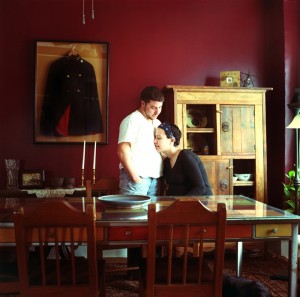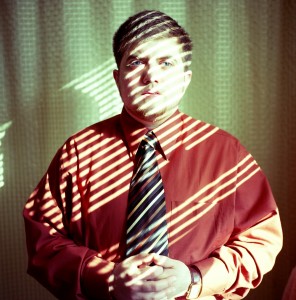Arthur Robinson Williams is a PGY2 Resident in the Department of Psychiatry at New York University. He earned his M.D. and a Master in Bioethics at the University of Pennsylvania School of Medicine and Center for Bioethics. Williams studied photography at Princeton University with Emmet Gowin, Mary Berridge, and Lois Conner. His work, sponsored by an Open Society Foundations Documentary Photography Project grant, can be found at www.MyRightSelf.org.
The University of Toronto Press has recently published an anthology celebrating the 5-year history of its medical humanities journal Ars Medica. I have included excerpts from the article I first published as a medical student in the Fall 2008 issue of Ars Medica that has been reprinted in the anthology. The article grew out of a documentary photography project, MyRightSelf, that I developed with transgender individuals and couples in the Philadelphia area over the course of 2008 which was subsequently funded by an Open Society Institute Documentary Photography Project grant. Now working as a second-year psychiatry resident, the publication of the anthology has given me an opportunity to reflect on my travels- academic, clinical, spiritual, photographic, and otherwise- in the intervening three years.
Dane and Erin. “There are always things I think people would change about their bodies. I know no man whose chest is big enough, hairline is stable enough, abs are eight-pack enough. I don’t think I am above all these influences. I wish I were taller and I wish my chest were without scars. Although they are fading slowly, my scars are pretty prominent.”
Most striking is the loss I feel in acknowledging that this project was the last significant work of photographic portraiture I have completed. While I have occasionally engaged in some landscape work while vacationing, my long hours in the hospital during residency have largely eclipsed other meaningful forms of engagement and creativity in my day-to-day life. I have also found that successfully living in New York City demands its own toll- the scale, expense, and cacophony of the City adding to the fatigue engendered by 14-hour shifts.
Perhaps those are excuses however, rather than true explanations for the distance that has grown between my photographic lens and potential subjects. I remember writing in my personal statement when applying to residency programs:
The psychiatrist and the photographer have much in common. Whether relating to another person as a patient or a subject, both contemplate notions of identity and perception, of the Self. Both, at their best, similarly investigate their own biases in understanding those of others. Perhaps this is why Psychiatry felt so familiar to me- it was a role that I had already cherished. Part of what I was seeking in medicine was the opportunity to sit with someone, to be available to them, to learn more about the human experience.
Jake: “I gained confidence in my ability to pass, not only physically, but socially as well. From there I started going to gay bars–not to hook up, but just to be there, to be around gay men, again, to be in gay space that I felt safe navigating. I liked letting gay men flirt with me. It made me feel validated in my gender.
Clinical work in the mental health field is emotionally draining. I wonder if the reserve I needed to make photographic images has been otherwise spent on treating patients. The average doctor’s day is filled with images, some radiologic, some metaphorical, others directly observed. Psychiatrists especially cultivate these images, drawing anecdotes, memories, and projections from their patients. The investment in this process consumes creative spirit as well as pathos. From Ars Medica:
For the participants with whom I have worked, the act of making a photograph has become–should be–as cathartic as the knowledge that the images will eventually reach a broader audience and as profound as the impact of the images upon viewers. For patients, likewise, the journey toward diagnosis and treatment may have as marked an impact on their latter years as their medical condition and/or disease state.
As a provider I have struggled not only to successfully complete a work up and treatment plan, but to find ways to enrich the process itself. Medicine-as-process, as a creative form imbued with empathy, becomes its own artistic medium in the act of naming and thwarting disease. Maintaining energy to do this well requires a source of renewal. I look forward to the day when once again this source may be found behind the lens.
A. Robin Williams, MD MBE
December 8th, 2011
Body and Soul: Selections from Ars Medica: A Journal of Medicine, the Arts and Humanities, was recently published by The University of Toronto Press. It is available at Caversham Books: (http://www.cavershambooksellers.com/search/1442612908).









